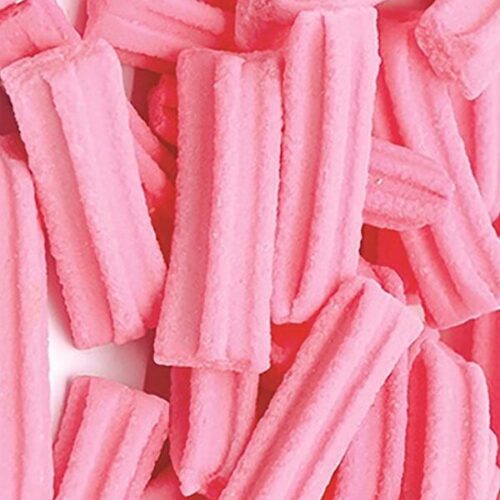Archives
now browsing by author
Why do we Like Sour Lollies so Much?
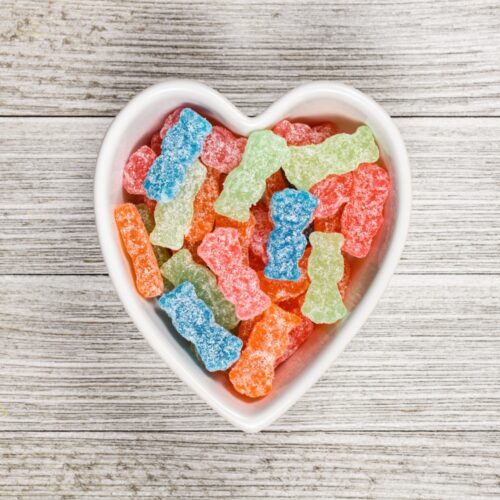
Sour lollies remain the most sought after sweet but just why do we like them so much?
Sour sweets range from the hard to the soft, with all kinds of chewy in between. Some are sour enough to melt your actual face off, whilst others are just pleasingly tangy.
One of life’s greatest mysteries (possibly) is why we get so much of enjoyment from something that is physically uncomfortable to eat?
Its all about sensation
Taste is a physical sensation. A reaction to certain triggers that activate our taste buds. Sour lollies are all about sensation; that journey from sour to sweet.
Although many of us enjoy the extreme sensation of the more hard core end of the candy spectrum, most of us can relate to the pleasure of sour jellies. There is just something about the initial hit of sour sugar on the tongue, that gives way to sweetness. It is a pleasing contrast, that also delivers a reward. A relief. And like a rollercoaster, or a spicy curry, it is so good that you want to go and do it all over again.
And then there is texture
If you have ever bitten your tongue, you will have first hand knowledge of the fact that the tongue is a hot bed of nerve endings. The way something feels in your mouth plays a massive part in your experience of it. Another layer of sensation is added.
In the case of sour jellies, it is again a multilevel game of contrasts. The crystalline sugar on the outside which ranges from the powdery to the positively granular (and in the best cases both) creates shapes against the tongue. They slowly (or quickly) dissolve, to reveal the softness of jelly underneath. And not just soft, but chewy. It is a complete playground in your mouth.
But what about the sour?
Most explorations of the effect of sour lollies are completely missing the point. Because, as we have seen, it goes beyond the sour. Yet it cannot be denied that the sensation part of the journey from sour to sweet is caused by the sour aspect of things.
Sour taste buds are activated by acids. Our intense reaction to sour foods can cause us to pucker our lips into grimace. It is partly learned response, partly chemical reaction.
There seems to be no evolutionary explanation for our love of sour, that does seem to diminish with age. We crave the calories that come with sweet tasting sugar, and the possibility of protein that comes with umami. We need salt to survive, whilst bitterness is usually a warning to steer clear. But sour? That remains a puzzle.
But sour is not just a one dimensional thing. Savvy sweetmakers use a number of different acids in their carefully guarded sour sugar recipes in order to get the most out their sour experience. Again, it is about creating sensations that work on multiple levels.
The mildest acids used are citric acid (from lemons) that gives a sharp and bright short lived shot, and ascorbic acid (vitamin C) that is mildly fizzy. Malic acid (from green apples) with its sour slightly astringent taste lasts for longer. Tartaric acid, from lemons and bananas (if you think that’s odd, think green banana) strips the moisture from your mouth.
Don’t forget astringency
Astringency is often related to sourness, yet something does not have to be sour to be astringent. It is the sensation of having your mouth stripped of all its saliva. The truly lip puckering. This has nothing to do with the reaction of taste buds to acid and is an entirely different reaction in itself. Think of strong black tea, or the skin of grapes.
So it would seem that the reasons behind our enjoyment of sour sweets is more than just an exploration into the science of sour. And more about the seeking of sensation plus the promise of reward.
Explore our range of sour lollies available to buy in bulk online now.
If you are planning an event and want to include lollies in your theme then our guide to lollies is a good place to start. We stock a huge range of bulk lollies to buy online so there is something to suit every occasion.
This article was reproduced on this site with permission from operafoods.com.au the “Bulk Lollies Wholesale”.
See original article:- Why do we Like Sour Lollies so Much?
What to put in kids party bags

What do you put in your kids party bags?
The world may have changed and our children may seem to grow up faster, yet the sheer excitement of a small child’s party remains the same. In the same way that a baby will have more fun with the box or the wrapping paper, younger kids will never fail to be excited by the simplest of party bags.
Sometimes it really is the simple things, and the basic contents of a kids party bag has remained unchanged for decades. Because kids will always be…well, kids.
If you want an easy kids party solution we have ready made 100g mixed lolly bags
What to put in kids party bags
Keep it simple. And inexpensive. Choose a few fun colourful items, add a few lollies, and there isn’t a child in the world that won’t go home happy. Oh, and don’t forget the time honoured tradition of a piece of birthday cake wrapped in a napkin.
Some parents hand them out at the door. This way it doesn’t really matter if they are not all exactly the same. If you plan on handing them out earlier, then you may want to consider making them all identical. That said, kids do like to compare loot and mixing up the content keeps the element of surprise.
Pocket money toys
Most stores have a great selection of pocket money toys. Bubble blowers, stickers, and bouncy balls never go out of favour.
Small themed toys
Look out for something small and inexpensive that ties in with the general theme of your party, or is personalised to each guest. Just one thing in each bag that makes it a little bit special.
Lollies
Sweets, of course. No self respecting loot bag is without lollies. Anything goes here, but maybe think about individually wrapped lollies that won’t make a mess.
What NOT to put in kids party bags
There is minefield of things to consider when dealing with other peoples children. As the years go by, that list seems to get bigger. Whilst there is no need to get hung up on every single possibility that you may inadvertently offend, it is worth keeping it mindful and respectful.
Noisy things
For most people, noisy things are a no-no. Nobody appreciates a carful of kids blowing on hooters and it can be hard enough calming kids down after a party.
Too much sugar
Just as lollies are an absolute must and no kids party is complete without sweet treats, be mindful of sugar overload. Nobody will thank you if they are still up at midnight.
Plastic bags
Keeping plastic to a minimum is always a good (if not entirely achievable) idea but plastic bags come with their own particular hazards. Consider using paper or fabric bags, or even making your own.
Allergies
It is not easy to cater for all allergies and sensitivities, and most kids and parents are good at policing themselves but it is good practice these days to make your party a nut free zone.
Age appropriateness
Make sure anything you include in your party bags is appropriate for the age range; no small parts or possible choking hazards. You might want to stay away from sharp pointy things too.
Check out our number 1 guide to lollies online.
And don’t forget that you can buy all your lollies in bulk from our online store.
This article was reproduced on this site with permission from operafoods.com.au the “Bulk Lollies online wholesaler”.
See original article:- What to put in kids party bags
Your Number 1 Guide to Lollies Online
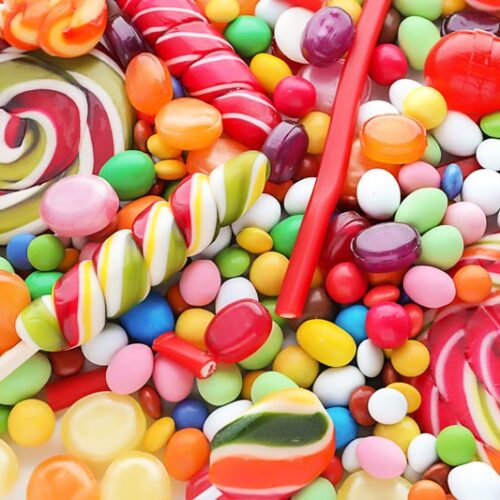
Lollies are as popular as ever and, despite the sugar police, are the best way to bring fun and colour into any event. Loved by kids (did we mention fun and colour) and adults (sweet, sweet nostalgia) alike, lollies always make people smile. Because we all need a little sugar in our life.
In this article we want to show you how to add a little magic to any event with sweets and lollies. Kids, grown-ups, and anything in between; chances are if you are catering for humans they are going to love lollies. Sure, sugary treats taste great, but there is a feelgood factor involved that just triggers a whole ton of positive emotions. And that’s what a party is all about, right?
Party planning with sweets and lollies
Why have sweets at a party?
What do lollies mean to you?
Chances are that when you begin to think about lollies at a party or event you have a picture in your head about what that looks like. Maybe it is full of bright colours or sugar-fueled children. Perhaps a bit retro, or even candy-cane nostalgic. But lollies can be all of these things, or none of these things. You can pretty much say whatever you want with sweets, and any occasion goes.
Consider a bowl of pure white sugared almonds at a classic white wedding. These are a tradition; a symbolic gesture. As sweets go, they lend a certain gravitas to the occasion and they certainly look the part. But what if you replace the sugared almonds with white jelly beans, or candy white mice? What would these have to say about the newlyweds, and how they choose to celebrate this occasion? The colour is still a match, but the contents evoke something different entirely. How about if the bowl was filled with not white but a multitude of competing colours. M&Ms for example.
The are two important points here. One is that colour AND content can help you set the scene and dictate the mood. Another is that lollies can find a place at any event. They can function as design element, conversation piece, ice breaker, and memory maker. They can be understated, overstated, fun, cute, happy, or downright silly. One thing they will never be is boring.
Ways to serve lollies
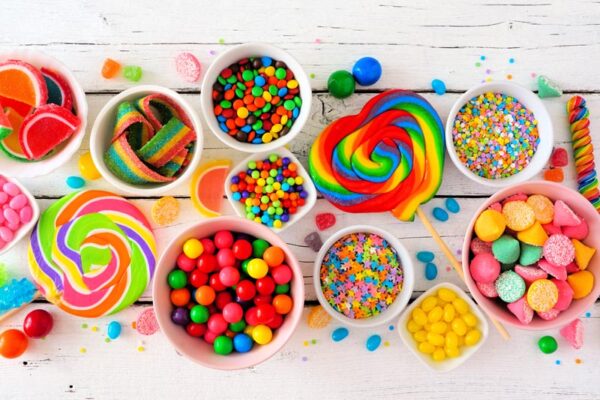
There are many ways to serve lollies at a party, and of course half the point is that guests get to take some home at the end. It is also a question of scale, bearing in mind that if lollies really do make a party then this would include movie night a deux. Or even solo.
So, starting small…
The sweet platter
The candy version of a sharing board, sweet platters have been having a bit of a moment. Lollies don’t lend themselves particularly well to a flat surface, although as long as there is a slight lip around the edge then you are ready to get creative. The Victorians (era not area) were particularly fond of sweets and had special platters fit for purpose. Often made of cut glass crystal they were designed to take pride of place on the table or sideboard.
The point of a platter, other than sharing, is variety. And grazing. A little taste, of many different things, to be enjoyed at your leisure. Go for a riot of colours, textures, and flavours. You could also throw in the odd pile of berries or fruit, a few biscuits, and even a few salty bits such as crisps or nuts. the sweet platter is equally at home on family games night as at dinner party for your boss.
The lolly buffet
The lolly buffet is the party equivalent of your local pick and mix station. Quite literally like a kid in a sweet shop. But free! For your guests anyway. Also known as a lolly bar, candy buffet, or lolly station.
Whatever you want to call it, this is a great way to solve the issue of what to serve for dessert. It takes a little more planning, yet involves far less execution, and makes an interesting point as well as providing plenty of insta-moments. If you would rather serve a dessert aswell, then you could consider setting up a candy buffet as a treat station, so that guests can fill their own lolly bags to take home.
You can find out more about creating your own lolly buffet in our article, but here’s a few things to think about. You will need a surface for setting up on, as well as bowls and jars for display. Consider tongs and spoons as you don’t really want people using their hands. Sweets will need labeling, and it is worth including any allergen information.
Oh, and you might need some lollies. Buying your lollies online can keep the costs down, and with so much to choose from is an excellent source of inspiration.
The pinata
As far as lolly delivery systems go, pinata is possibly the most fun. Not just for kids parties and family gatherings, a pinata can be a great alternative to a candy buffet if you think you can pull it off. Planning the logistics of a large scale pinata for a big event is probably not for the faint hearted but is a worthwhile addition to arsenal of ideas. At the other end of the scale, the mini pinata is also a thing.
In case you have just arrived on Planet Earth, pinata is a hollow container filled with sweets that is strung up so it swings. A traditional game, guests take it in turn to wear a blindfold and hit the pinata with sticks until it breaks and a shower of sweets come tumbling down. It is fun, loud, and can get ridiculously competitive. The ideal icebreaker and an excellent way to get people together and even blow off a little steam. Never underestimate the power of pinata!
Find out more with our post on how to play pinata, or learn how to make a mini pinata.
The lolly bag
The lolly bag is all about party loot to take home. Not just confined to kids parties, any event worth going to doesn’t let you leave without a little something to take home. Strictly speaking, the lolly bag is not all about the lollies, however as the name suggests no self respecting lolly bag is complete without a few lollies. Even the swankiest of corporate gift bags should contain a few lollies at the bottom, right? It is the equivalent of finding the very last thing at the bottom of your Christmas stocking.
Lolly bags take two forms. The first is an empty container that you give you guests to fill up from the lolly buffet. You can use paper sweet bags, cones, or even small boxes but just make sure that they can be closed and secured for transport home. The other type is your classic lolly bag, quite often a pre made bag that fits your theme, that is filled with a few little things for your guests to take home. The are usually all identical, or as near as.
What types of lollies should I choose for my party?
Colour
Beyond the obvious blue for a boy and pink for a girl, colour is by far the strongest element to design a theme around. Colour theory is pretty complicated stuff, and our individual reactions to colour is hugely subjective as well as open to cultural interpretation. All that aside, here are some basic colour associations to get you started.
Black is said to be sophisticated and just a little bit mysterious.
White is the colour of purity and innocence, freshness and simplicity, clarity and communication.
Red is stimulating and is the colour of passion and power.
Blue is said to be peaceful and calm.
Green is refreshing and relaxing.
Yellow is sunny and cheerful.
Orange is happy and uplifting.
Purple is the colour of prosperity.
Pink is playful and the colour of joy.
Brown is reliable and dependable.
Pink lollies remain one of the most popular choices, whilst blue lollies often divide the crowd. Or create a riot of colour with a rainbow of coloured lollies.
Texture
Texture is an important part of the eating experience of lollies so it is worth giving more than a passing thought. Offering a range of textures is a good way to make sure there is something to please everyone, or you could make a focus point of one texture. Think about the soft pillow that is marshmallow, or the slight chewiness of jellies and gummies. Jelly beans offer the best of both worlds with a harder shell surrounding the soft jelly inside. Then there is the crunch of honeycomb, or Maltesers. The possibilities to play with texture are endless.
The texture of lollies also directly affects their weight, which is worth considering in terms of how many you get to the kilo, as well as how they may fit in containers or make a pinata too heavy to hang.
Size
As well as the considerations of weight, the size of each lolly will affect how it sits in a jar or bowl. Shape will also make a difference. Lollies come in all shapes in sizes and how you display them will have a massive impact on the overall effect.
Taste
As well as range of textures, think about offering a range of tastes too. Think about how they might taste together, as well as separately. Depending on the overall effect you are trying to create, you may want to focus on one type of taste rather than a riot. Will your guests appreciate sour lollies, or perhaps they would prefer a choice of chocolate lollies. Maybe both together will create an interesting contrast.
Wrappers
For a lolly buffet or platter there are really no limits to the lollies you choose but for a pinata you may wish to stick with individually wrapped lollies. This is no hard and fast rule, and there is nothing quite as pleasing as a shower of M&Ms, but hygiene is still top of mind, particularly post pandemic.
Lollypops
Lollypops belong in a class of their own. Not only are they a different shape, but we eat them differently and even have different associations with them. But really, is there anything more fun than a lollypop? Lollypops make a great display, particularly if you add in a few giant ones.
Gluten free
You may want to think about guests that have allergies and include a separate selection of gluten free lollies.
We hope that this guide to lollies online inspires you to include lollies when planning your next party or event. Some occasions call for lots of lollies and buying bulk lollies online is a really cost effective way of doing it. We have plenty of ideas for putting together your own selection, or you could just make life super easier and go for a ready packed party mix.
This article was reproduced on this site with permission from operafoods.com.au the “Bulk Lollies online supplier”.
See original article:- Your Number 1 Guide to Lollies Online
Humbug lollies and aniseed sweets
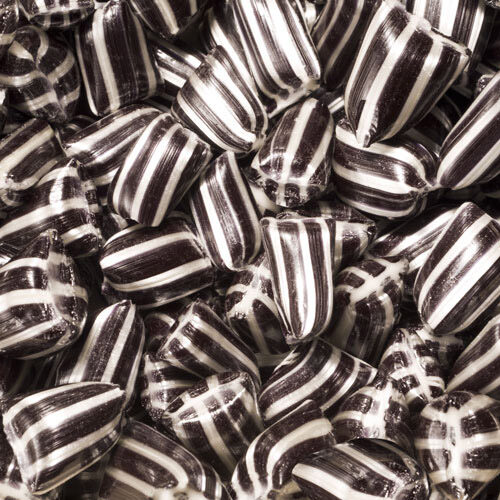
Aniseed was one of the first ingredients to be used in what we now call confectionery, and remains a popular flavour to this day.
But what is it about humbug lollies that we like so much?
What are humbugs?
Humbugs are a traditional boiled sweet. They are always striped, and usually black and white. In the UK, humbugs are flavoured with peppermint oil but here in Australia they are flavoured with aniseed. Mint humbugs, wrapped in a cellophane twist, give way to a slightly chewy centre. Traditional aniseed humbugs are more like rock candy, shaped as pillowy pyramids, and sold unwrapped.
Like most hard boiled sweets, humbug lollies are made by heating sugar and glycerine together with colour and flavour. Heated to 145C, the sugary mass is then stretched and folded as it cools. It is then rolled into cylinders, sliced, and then twisted to form the final familiar shapes. The stripes are created by folding together two different colour ‘doughs’.
Aniseed sweets
Aniseed sweets have been around since the 1400s. Known as comfits, hard sugary sweets began as medicines, made with the aromatic herbs and spices of the local apothecary. These sweets consisted of a seed, such as anise, encased in a hard sugary coating. Sugar was used to make the strong flavours more palatable.
A spoonful of sugar does indeed make the medicine go down.
Aniseed flavour in sweets
The flavour of aniseed in sweets certainly divides the crowd. And its medicinal personality cannot be denied. For some, candy that tastes like cough medicine is a step too far. For others, it could be this very quality, that provides its comforting appeal.
When we refer to aniseed as a flavour, rather than the plant or seed itself, what we mean is a distinct flavour molecule known as ‘anethole’. Used for centuries to flavour food and drink, this aromatic compound is found in aniseed, star anise, fennel and licorice. All of these plants were prized for their medicinal properties.
Love aniseed? Then you probably love licorice too…
Anise is perhaps best well known for its digestive qualities. It can help with nausea and stimulate the appetite. After a meal it can help soothe the digestion, eliminate gas, and freshen the breath.
Humbug lollies are just one of our many varieties of bulk lollies you can buy online.
This article was reproduced on this site with permission from operafoods.com.au the “Bulk Lollies Suppliers”.
See original article:- Humbug Lollies and Aniseed Sweets
Pucker up for sour lollies

Sour lollies are one of the most sought after sweets in Australia. Just sweet enough, yet shockingly sour, it seems we can’t enough of sweet and sour lollies.
A taste for sour candy
Invented in the 1970’s, around since the ’80s, and part of every 90’s childhood, sour sweets are universally popular. Some are head-blowingly extreme whilst others are just lip-puckeringly sharp. Many are quite mild and just pleasingly fizzy on the tongue. All about sensation, they all take us on a journey from sour-to-sweet.
With most sour sweets the sourness is in the outside powdery/sugary coating. In some, such as the old school acid drop, the sourness is inside the sweet itself. Sour candy comes as both the jelly/gummy variety and also as hard boiled sweets. Sour jelly sweets are what we tend to think of when we refer to sour lollies. They almost always feature a sour sugar coating and a soft fruity jelly inside. It is this that creates the effect of sweet after sour.
So what makes sour candy sour?
All sour sweets have a mixture of acids in their sugar coating, known in the trade as sour sugar. Which is fair enough. There are a number of acids used in sweet manufacturing and they all have different flavour profiles, with varying levels of sourness, bitterness and astringency. It is the interplay of these various acids that makes all sour candies feel different on the tongue. Each brand will have its own well guarded secret recipes.
Citric acid provides a burst of sour tang that doesn’t last very long on the tongue. Found in lemons and limes, it is sharp and bright.
Malic acid is said to be longer and smoother on the tongue, also acting as a flavour enhancer that boosts the sweet fruity flavour. This is the acid found in green apples. Some of the extreme sour sweets use malic acid coated in oil so that it takes longer to appear on the tongue. Kind of like a slow release effect.
Tartaric acid is found in bananas and lemons. Moderately sour, it is the most astringent of the acids used in confectionary. It is that dry mouth puckering feeling like you get from raw rhubarb or strong tea.
Fumaric acid is strong and sour. It lasts longer on the tongue as it dissolves more slowly.
Ascorbic acid, also known as vitamin C, is also used. It is mildly fizzy on the tongue.
One of the five tastes (actual physical sensations triggered via receptors in the mouth) sour is activated by the acids in food. They quite literally make your mouth water.
Why does my tongue hurt after eating sour candy?
Most sour candy won’t hurt your tongue, yet extreme sour candy can irritate your tongue and the lining of your mouth. So much so that some even carries a warning label. The burning sensation is down to the acids; much like eating super strong salt and vinegar crisps.
If you do indulge in some extreme candy eating (or crisp eating for that matter) then cold milk, yoghurt, or ice cream will help to soothe the burn.
We think eating sour lollies should be lip puckeringly pleasant, not a hazard to your oral health. Here’s our pick of the best sour lollies suitable for everyone…
The best sour lollies for your lolly buffet
Sour cola lollies
Everybody’s favourite – you can’t go wrong with sour cola lollies.
Sour heart lollies
Soft, squishy, AND sour. Our sour heart lollies are pretty in pink, but we also sell blue sour lollies too.
Sour mix lollies
A bumper bag of party mix sour lollies is the simplest and most effective way to buy sour lollies in bulk. They are also gluten-free. We know this can be a minefield, so we wrote this post on choosing gluten-free lollies to make things a bit clearer. You’re welcome.
If you are planning a party or special event, you don’t want to miss our tips and tricks on how to make a lolly buffet.
Why not explore our range of sour lollies online? Get all your bulk lollies for a lolly buffet at wholesale prices here.
This article was reproduced on this site only with permission from operafoods.com.au the “Online Wholesale Lolly Shop”. See original article:- Pucker up for Some Sour Lollies. The Lolly Shop is a wholly owned subsidiary of Opera Foods PL.
All the lollies for a pinata party

If you have never had a pinata party then you are totally missing out. Find out what all the fuss is about and get all the pinata lollies you will ever need.
What is a pinata?
A pinata is a breakable container, decorated, and filled with candy. A key part of a celebration or ceremony, the pinata is hung from a height and players take turns to hit it with a stick. Once the pinata breaks open, the contents will fall out.
The pinata has been around for centuries and is commonly associated with Mexico. It was said to have begun in China, then taken to Europe, and then introduced to Mexico by the Spanish. Mexico already had a similar form of celebration at this time yet it was the pinata that became a huge part of Mexican culture.
How to play pinata
The pinata is hung from a tree, or somewhere strong with a bit of height. The players form a wide circle, leaving plenty of room around the hanging pinata. Each player is given three turns at hitting the pinata. They are first blindfolded and then spun around. Other players are allowed to swing the pinata to make it harder to hit.
Once the pinata breaks open, everyone returns to the outer circle. They are given empty lolly bags and can then rush in to gather up what treats they can. It is a good idea to have some filled lolly bags kept aside for those who don’t manage to collect any loot.
What to hit a pinata with
Traditionally, pinata is played with a wooden stick. You only really need one. A commercial pinata will come with a stick, but if you make your own pinata you will need to make your own stick. You can use anything suitable you have around the house but it needs to be thin, fairly lightweight, and about 30 inches (or around three quarters of a metre) long. A dowel rod from a hardware store is ideal, and you can decorate it with yet more tissue paper.
How to make a pinata
You can make your own pinata, yet they are widely available ready made. They come in a variety of shapes, with the donkey or llama shape still seen as the classic pinata. The original pinata was in the form of a five pointed star and was connected to religion. Although still seen at Christmas and other festivals the pointed star has been replaced with more commercial designs.
The easiest way to make a pinata is with a big balloon. Make a few layers of papier mache (more for a larger stronger pinata) leaving a hole at the top for filling. Once the papier mache is dry, the balloon is removed, and the pinata is decorated with tissue paper frills. Make a couple of holes in the top and secure with strong string or twine for hanging. The pinata fillers are put in through the hole and it is ready to hang.
What do you put in a pinata?
Pinatas have been around as long as people have been making treats out of sugar and traditionally they have always been filled with lollies. Or sweets. Or candy. Whatever you like to call it. It is only since the invasion of the sugar police that parents have been seeking alternative pinata fillers. But even adult themed pinatas (you know the ones) have some lollies inside. So we think lollies are the ideal pinata filler. It is, after all, a pinata PARTY.
How much candy for a pinata?
Bear in mind that the fuller a pinata is, the harder it is to break open. For a large pinata you will need 3lbs/1.3kg of lollies. That will give 15 children about 10 lollies each. Or 2lb of lollies for a medium pinata. That’s just under a kg.
What are the best lollies for a pinata?
Small lollies like jelly beans may look great spilling from a pinata but they are not really very practical. Individual mini pinatas are great for these types of lollies though.
For a full size pinata, individually wrapped lollies are the way to go.
This party mix bag of lollies is ideal for a pinata party.
Celebrations make the ideal pinata filler and are popular with everyone.
Or make things easy with this pinata mix of lollies.
We hope you have been inspired to make your next celebration a great pinata party.
We stock a range of individually wrapped pinata lollies and there’s also plenty of cheap pinata candy available to buy in bulk.
This article was reproduced on this site only with permission from operafoods.com.au the “Gourmet Online Wholesale Grocer”. See original article:- All the Lollies for a Pinata Party
Jelly Beans – The Original Penny Sweet

Thought to be the first sweet to be sold by weight, jelly beans are small candies the size and shape of a bean. The outer shell is hard and sugary whilst the inside is firm and chewy. Available in an almost unlimited array of colours and flavours, they have attained cult status. Popular all year round, these rainbow nuggets are a favourite alternative for chocolate at Easter.
Where do jelly beans come from?
As American as apple pie, they are believed to be the love child of sugared almonds and Turkish delight. Although said to have been around since the late 1800s, and were included in the dictionary in 1905, they gained popular recognition in the 1930s. Marketed for Easter, because of their egg like shape and bright colours, they gradually became a lolly shop favourite.
Jelly beans were the first candy to be sold by weight. You could have as many or as few as you liked – hence the term penny sweet.
How are jelly beans made?
There is quite a procedure involved in the creation of these little sweets and it is similar to the sugared almonds we mentioned earlier. It takes a whole week to make a jelly bean.
Liquid sugar is heated to just under 180C and then mixed with starch. This is poured into moulds. Left to dry, it forms the chewy centre. Next, the nascent beans are taken from the moulds and given a steam bath followed by a new coat of liquid sugar. From there, it is into the spinning machine that creates the hard exterior. Colour and flavour are sprayed onto the continually revolving beans. Next, whilst still spinning, a sugar coat is applied. Granulated sugar, not liquid this time, is sprayed over the surface until the desired coating has been achieved. It is a gradual process of building layers of sugar over the soft interior.
Finally, the newly formed confections are sprayed with hot syrup and wax (or that non-vegan confectioners glaze we were talking about) to add the final polish. Once dry they are ready for packaging and their journey into the world.
Do jelly beans have gelatine?
Surprisingly, jelly beans are not made from gelatine. They actually have more similarity to toffee than to jelly.
Are jelly beans vegan?
The lack of gelatine does not however mean they are vegan. They may contain beeswax. Or they may contain confectioners glaze, which often has dairy in it. White sugar is often under question by the vegan community as it may have been processed using animal products.
Are jelly beans gluten free?
Again it is a question of derivatives. Usually the ingredients will not include anything with gluten in it, although check the label to see which starches are used as thickeners. Be aware also that some syrups may have wheat derivatives involved in their processing.
Are jelly beans fat-free?
Yup. No fat here.
How much sugar is in jelly beans?
They are however, as many fat-free things turn out to be, made almost entirely of sugar. Which is kind of okay seeing as they are um…sweets. Y’know things eaten, in moderation, for fun.
Do black jelly beans contain licorice?
They can do. Often the black ones turn out to be purple and taste of some kind of berry. Or grape. Sometimes they are actually black and taste like licorice. Usually this involves aniseed as oppose to licorice, but sometimes they will contain licorice. We explain about licorice in more detail here…
What flavour are white jelly beans?
A bonus question. Its up for debate what flavour the white ones are, and they do differ across manufacturers. Sometimes it is coconut or vanilla. Often they have that general flavour of white sweets, with that familiar yet unrecognisable quality. Sweet with a sharp edge of acid, that could be lemonade but tastes nothing like lemons? Turns out it could be pear.
Another surprise.
How many jelly beans in a kilo?
And finally, guess the number of jelly beans. Not so you can cheat at the next school fair but it will come in handy when you simply can’t imagine what a kilo of jelly beans is IRL. So that you know how many lollies for a lolly buffet, or how long you can reasonably be expected to make a big bag last.
Clearly, they are all different. But your average jelly bean that looks like a baked bean is about 1g. So in a kilo you can expect a thousand jelly beans. That’s enough for a 100 people to have 10 each.
Or 10 people to have 100 each. Its a free country. Just about.
You can buy bulk jelly beans right here. Why not see what other goodies you can buy in bulk at our online wholesale store?
Licorice allsorts. Family favourite or retro gone wrong?
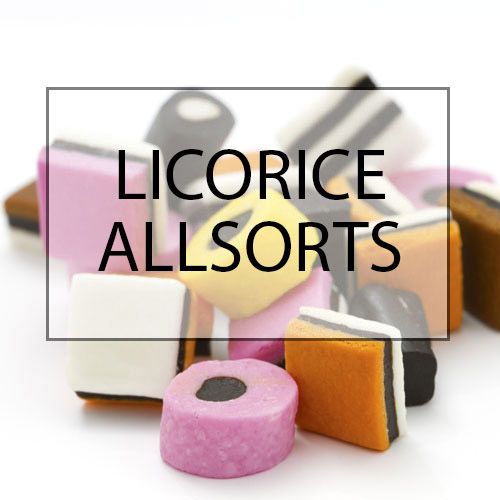
Let’s first clear something up. Actually two things.
Firstly, licorice root comes from a plant. The licorice plant. Black licorice is a confection. They are not the same thing yet they are connected. (There’s also red licorice but that’s a whole other story)
Secondly is the matter of spelling. Regardless of whether referring to plant, candy, or both, some spell it licorice whilst others prefer the more antiquated liquorice. It matters not.
What is licorice?
With a flavour similar to anise or fennel, neither of which it is related to, licorice has long been used as a herbal remedy and a flavouring. It contains a compound that is fifty times sweeter than sugar, and dried sticks of licorice root are a traditional form of candy.
Black licorice is the original confection, flavoured and coloured with the extract of the roots of the licorice plant. Grown in many parts of the world, it was taken to Pontefract, Yorkshire, England in the 11th century by monks. Prized as a medicinal plant for centuries it was not until 1760 that the first commercial licorice candy was made. Pontefract cakes, a hard candy made with licorice extract and sugar, are still made to this day.
There are other forms of candy with the name licorice but they are not black and do not taste of licorice. Red licorice is bought as strips, ropes and tubes. Even more recently, this comes in a rainbow of shapes, tastes and colours. The only thing it has in common with black licorice is the texture.
What is licorice made from?
Licorice is made from an extruded paste that is then cut and glazed. Generally it will contain sugar, starch, binder, gum, molasses and gelatin. Aniseed is now often added to replace some of the more expensive licorice extract. Some licorice is prepared and marketed as a healthy form of candy and will be made from as natural ingredients as possible. Commercially made mass0-produced licorice may contain colours, preservatives and flavourings. Molasses is used to enhance the bittersweet flavour.
Red licorice, and all non-black licorice, is made in much the same way but has fruit flavourings and colours added. And no actual licorice.
What gives licorice its flavour?
The sweet flavour is licorice is down to a molecule called glycyrrhizic acid. The anise-like flavour is an aromatic molecule called anethole, which is also present in aniseed, fennel and star anise. Some lollies, such as aniseed humbugs, have a similar flavour to licorice but are made from only aniseed and not licorice.
In its natural form, licorice has many unique aroma molecules present that set the flavour apart from aniseed. The heat-processed licorice extract has some unique flavour molecules that give black licorice its deep caramel notes.
Licorice allsorts
Licorice allsorts are a classic assortment of licorice lollies. Made from sugar fondant and black licorice sandwiched together in a variety of shapes, as well as aniseed jellies and coconut wheels, they have been around since the end of the nineteenth century.
Are licorice allsorts vegan?
Licorice allsorts may contain gelatine and beeswax so are not vegan.
Are licorice allsorts gluten-free?
Most licorice allsorts are made with wheat so are not gluten free.
Buy wholesale lollies for your lolly bar or visit our bulk food store.
Choosing gluten free lollies for your birthday party or lolly bar

We know. Gluten free can be a minefield. And gluten-free lollies are no exception. But the need to cater for food allergies has become the new normal.
You may just want a sweet treat for yourself or your kids, such as a gluten-free biscuit or lolly. Or you may need to prepare for a kids party or other lolly bar occasion.
The most important thing to say, and this cannot be stressed enough, is to always check the label. And not just the ingredients.
Gluten-free lollies will have a clear label stating they are gluten-free. Not only will they contain no gluten, but they will have adhered to strict guidelines around cross contamination and working practices.
You would think it is easy to spot the gluten free varieties. Surely if you stick to the obviously sugary ones and stay away from those that look, well, more wheatey, then its job done. Unfortunately it is not that simple. When is it ever?
Wheat derivatives, and therefore gluten, are everywhere. Even if your lollies contain no cleverly disguised wheat products, chances are that they share a conveyor belt with those that do.
Wheat starch can pop up in the least expected of places. Glucose syrup is also often made using wheat yet it is deemed gluten free by manufacturing standards. Generally safe to consume by all but those with the severest of wheat allergies, it does however find its way into products labelled gluten free.
What lollies are gluten free?
Thankfully, manufacturers are becoming far more tolerant and are investing the time and money that it takes to make safe gluten-free products. We have several varieties of gluten-free lollies to choose from. Create an individual mini lolly bar, away from the main one, and with separate scoops and containers. Label everything clearly, with labels that will stay put.
Gluten-free cola bottle
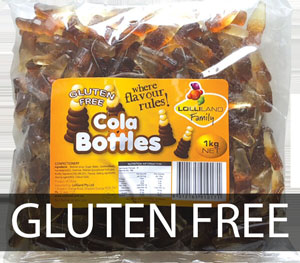
Gluten-free fruit rings
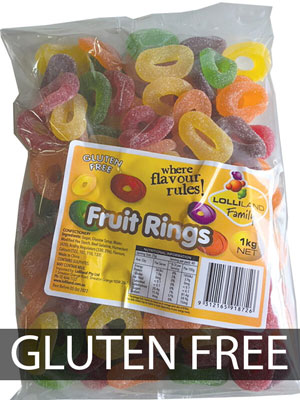
Gluten-free fruity frogs

Gluten-free gummy lips
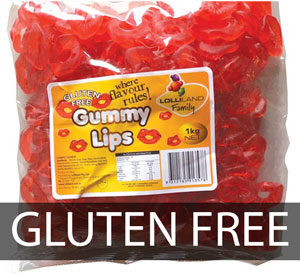
Gluten-free party mix
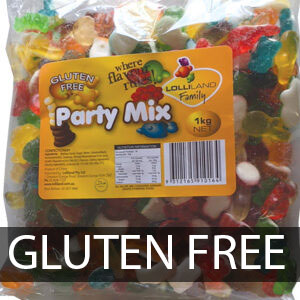
Shop our range of gluten-free lollies or buy gluten-free wholesale at our online store.

